Market
Input Output CEO Charles Hoskinson on Crypto Valley Success


Over the past decade, Crypto Valley in Zug, Switzerland, has grown into a global leader in blockchain innovation, with a valuation surpassing half a trillion dollars in 2021. It has become a hub for pioneering companies, driving the future of decentralized finance (DeFi) and blockchain technology.
In an exclusive for BeInCrypto, Charles Hoskinson, CEO and founder of Input Output Global, reflects on the factors behind Crypto Valley’s success and the role Cardano has played in its rise.
A Decade of Growth
Ten years ago, Crypto Valley was just starting out in Zug, Switzerland. Today, it’s a bustling hub for blockchain technology and home to many companies making a global impact in cryptocurrency. By 2021, the valley’s value shot up to over half a trillion dollars ($611.8 billion), showing just how far it has come and how much potential it still has.
“The success of Crypto Valley over the years can be attributed to several fundamental drivers, including sufficient funding resources, Switzerland’s regulatory framework, and highly skilled professionals sharing their expertise. The canton of Zug’s taxation standpoint is also a key factor; it has the lowest tax rates at approximately 11-12%,” Charles Hoskinson explained.
A significant pillar of Crypto Valley’s acceleration has been Input Output’s (IOHK) flagship project, Cardano. Offering a third-generation blockchain platform, Cardano joins the commitment to scalability, sustainability, and interoperability.
Input Output’s dedication to rigorous research and development has expanded Cardano’s reputation and influence beyond the borders of Crypto Valley, establishing it as a core player in the blockchain space. The Cardano Foundation, based in Zug, continues to support the cause, ensuring that Cardano retains its space as a pioneer in decentralized finance.
The Fourth Generation of Blockchain
Over the past decade, blockchain technology has grown and matured, bringing us closer to the new generation of blockchain. Switzerland, and Crypto Valley in particular, has been at the heart of this progress.
“Switzerland is set to remain at the forefront of the DeFi revolution by navigating the complexities of regulation in the industry. As the DeFi world accelerates, the ripple effects of Crypto Valley’s growth will extend beyond the blockchain hub in Zug to the inclusion of global economies, and will help reshape the financial landscape for the future,” the Input Output CEO commented.
According to Hoskinson, blockchain’s journey started with Bitcoin, the first generation, which came out of the Cypherpunk movement. The second generation, led by Ethereum, introduced smart contracts and made blockchain programmable.
The third generation focused on improving speed and efficiency, allowing the technology to handle more transactions smoothly and at lower costs. But even with these improvements, there are still challenges ahead.
“Each generation has been unique in the evolution of cryptocurrencies and blockchain technology, and the upcoming fourth-generation presents us with new challenges. We’re not at the finish line yet,” he added.
The fourth generation will focus on two major gaps: privacy and identity. While earlier versions of blockchain provided transparency and security, they haven’t been able to protect sensitive data effectively. This is critical in industries like finance, healthcare, and supply chains, where a mix of public transparency and private confidentiality is needed.
Right now, blockchain technology struggles to offer the privacy features that businesses and users need to securely manage their information. The fourth generation will introduce selective privacy, where users can choose which details to keep private and which to make public. It will also improve identity management, making it easier to manage real-world assets on the blockchain.
“Having been a driving force in the innovation of blockchain technologies, we’re now heading towards revolutionary advancements in privacy and identity. On its current trajectory, the future is bright for redefining the way we secure and control user identities,” Hoskinson stated.
Switzerland: A Model for Future Blockchain Hubs
Switzerland has become more than just a blockchain hub; it’s now a model for future crypto clusters around the world. The country’s support for technological innovation, particularly in blockchain and cryptocurrencies, has been essential to the growth of the industry.
“The technological advancement of blockchain and cryptocurrencies would not be possible without Switzerland’s support and approach. The country’s mindset of fostering innovation is the catalyst driving the industry forward, creating an environment where blockchain tech can truly thrive,” Input Output CEO said.
The progress in blockchain so far has been crucial in shaping the future of the industry. Switzerland’s leadership provides a clear example for other regions looking to build their own crypto clusters.
With its balanced regulatory approach, Switzerland demonstrates how to create a secure and efficient framework for blockchain projects — today, Crypto Valley hosts nearly 1,300 blockchain companies and 13 unicorns.
“To celebrate these accomplishments and mark the 10th anniversary of the Ethereum Foundation, I am honored to be recognized for my contributions to the Swiss economy, as well as global economies, as one of the founders of Ethereum,” Hoskinson shared.
Reflecting on a decade of Crypto Valley’s growth, the achievements so far are just the beginning. The milestones reached and innovations made point to a promising future for blockchain. The next ten years will likely bring further advancements and even greater potential for the industry.
Disclaimer
In compliance with the Trust Project guidelines, this opinion article presents the author’s perspective and may not necessarily reflect the views of BeInCrypto. BeInCrypto remains committed to transparent reporting and upholding the highest standards of journalism. Readers are advised to verify information independently and consult with a professional before making decisions based on this content. Please note that our Terms and Conditions, Privacy Policy, and Disclaimers have been updated.
Market
XRP Futures Traders Increase Bets on Upside
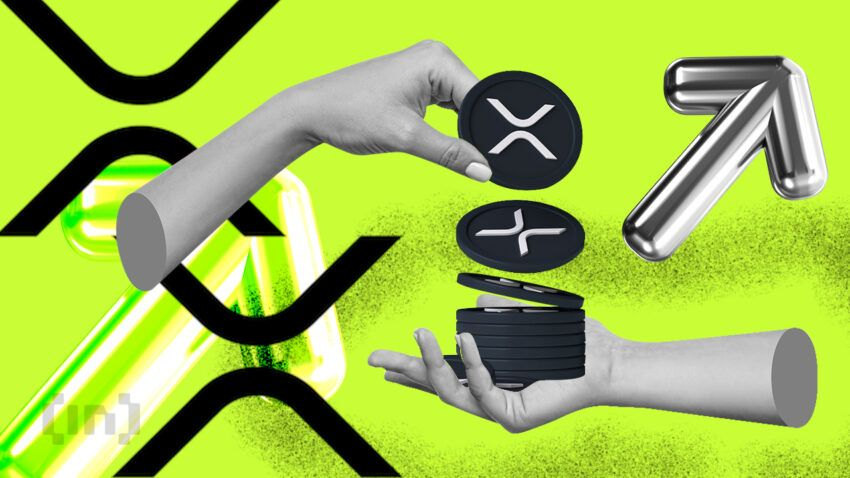
Over the past week, XRP’s price has remained range-bound amid the broader market’s recovery attempt.
However, with a growing bullish bias toward the altcoin, XRP may be on the brink of breaking free from this range and trending upward. This analysis explains why.
XRP Futures Traders Bet on Upside as Long Positions
The momentum shift towards the bulls has become evident, particularly within the futures market, where long bets on XRP are now surpassing short positions. This is reflected by the token’s XRP’s long/short ratio, which is currently at 1.07.

The long/short ratio measures the proportion of long positions (bets on price increases) to short positions (bets on price declines) in the market.
When its value is below one, it indicates that the number of short positions outweighs long positions in the market, suggesting bearish sentiment or a lack of confidence in the token’s future price performance.
As with XRP, when an asset’s long/short ratio is above one, it means there are more long positions than short ones. It indicates that traders are predominantly bullish on XRP and hints at a higher likelihood of an upward breach of its narrow range.
In addition, XRP’s relative strength index (RSI) has climbed steadily, indicating a gradual rise in demand for the token. The key momentum indicator, at 50.77, currently rests above the neutral line and is in an uptrend.
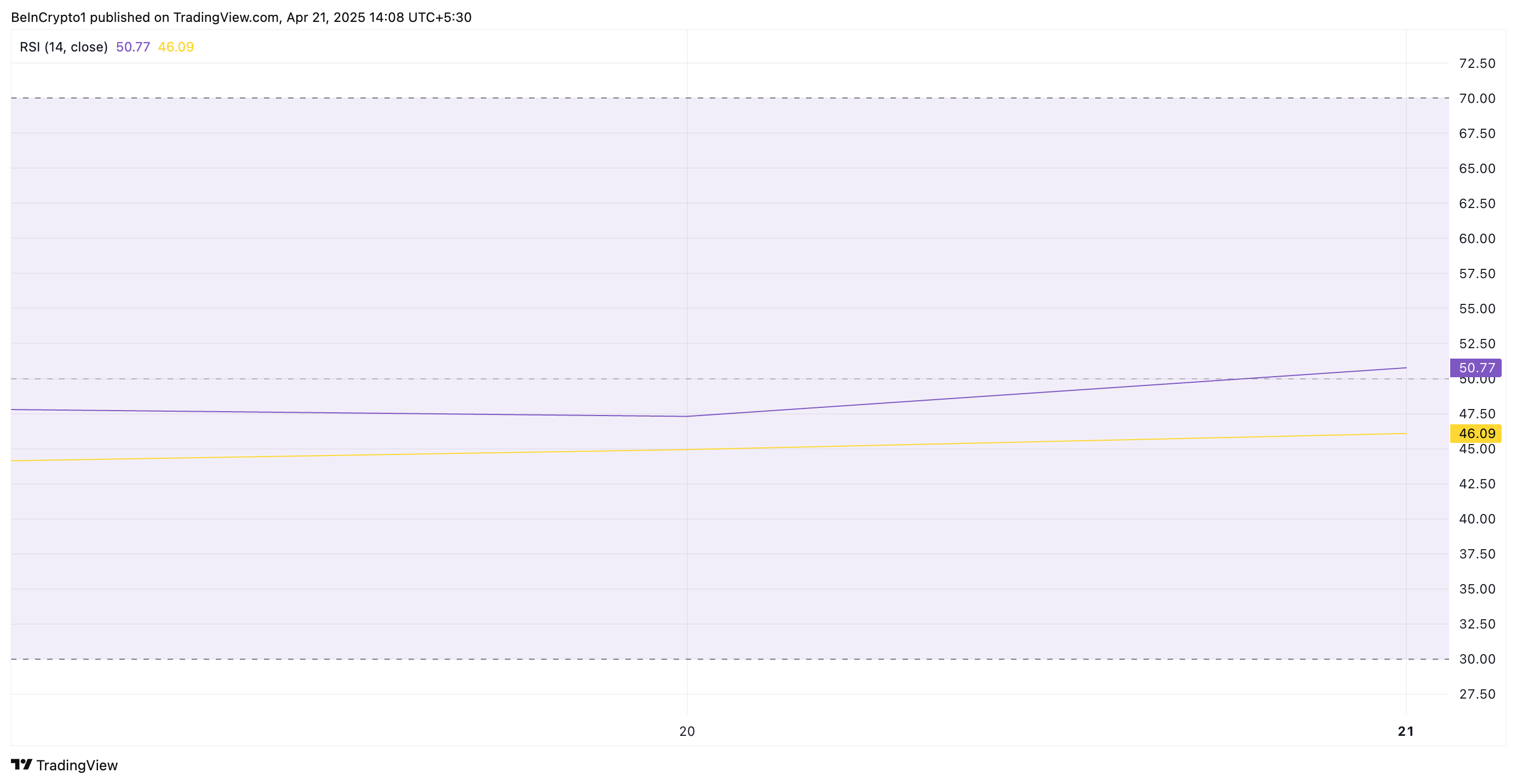
The RSI indicator measures an asset’s overbought and oversold market conditions. It ranges between 0 and 100. Values above 70 suggest that the asset is overbought and due for a price decline, while values under 30 indicate that the asset is oversold and may witness a rebound.
At 50.77, XRP’s RSI signals a shift toward bullish momentum. It indicates that buying pressure is starting to outweigh selling pressure, and the asset may be poised for further price increases.
XRP Eyes $2.18 Resistance as Bulls Look to Push for $2.29
XRP currently trades at $2.13, just 3% away from its next significant resistance level, $2.18. If buying pressure intensifies and the altcoin successfully flips this price point into a support floor, it could trigger further price growth. In this scenario, XRP could potentially climb to $2.29.
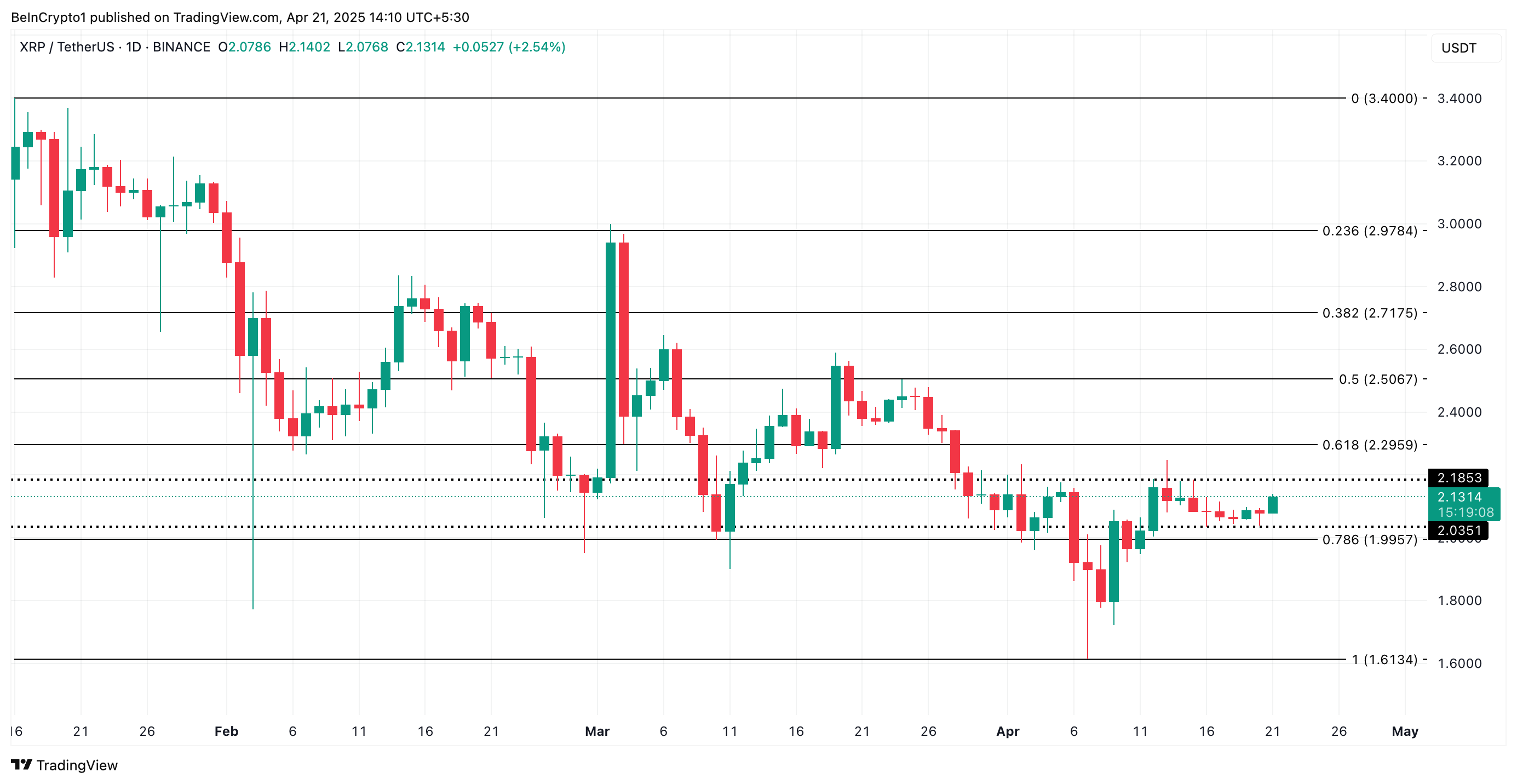
However, if demand weakens and the bears regain control, XRP may remain range-bound. It could even break below the $2.03 support and fall to $1.99.
Disclaimer
In line with the Trust Project guidelines, this price analysis article is for informational purposes only and should not be considered financial or investment advice. BeInCrypto is committed to accurate, unbiased reporting, but market conditions are subject to change without notice. Always conduct your own research and consult with a professional before making any financial decisions. Please note that our Terms and Conditions, Privacy Policy, and Disclaimers have been updated.
Market
Optimism, Aztec, and Huma Finance


The crypto market is attempting a recovery, with Bitcoin (BTC) nearing the $90,000 milestone. Amidst improving sentiment, several startups are launching enticing airdrops, providing crypto enthusiasts with opportunities to engage with budding platforms without initial financial input.
This week, we discuss airdrop participation opportunities from three projects with financial backing from renowned investors.
Optimism
Layer-2 blockchain Optimism is one of the top three crypto airdrops this week. The Optimism crypto airdrop comes after the network raised $267.50 million from key investors such as Andreessen Horowitz, Coinbase Ventures, Paradigm, and IDEO CoLab Ventures, among others.
The airdrop concerns a SuperStacks Campaign, which opened on April 16 and will remain until June 30.
“With many chains building as one, a new network structure is emerging to solve fragmentation in Ethereum. This network is modular, interoperable, and composable by default. We call it the Superchain: and it changes everything,” Optimism explained.
Rewards are in the form of points, awarded for interacting with the projects. Airdrop farmers also get rewarded for providing liquidity to superchains, scalable blockchains combined into a single ecosystem to solve Ethereum fragmentation.
Actual tasks bring 10 EXP (experience points) per $1 of daily liquidity. In the past, Optimism held five airdrops, giving away over 265 million tokens.
“You may be eligible for the 6th airdrop without realizing it. In the system, we collect badges as you perform operations on Optimism. However, since it counts your previous operations when you log in, you may have opened many badges.,” one airdrop farmer explained.
This means even minimal effort could yield rewards. However, participating in the Optimism airdrop does not guarantee future rewards. Instead, it only provides an opportunity to earn points.
Aztec
Another top crypto airdrop to watch this week is Aztec, bringing forth a privacy-focused Layer-2 zero-knowledge (ZK) rollup on Ethereum.
Aztec is backed by $119.1 million in funding from investors such as Andreessen Horowitz (a16z), Paradigm, Consensys, and Coinbase Ventures.
The project has garnered significant attention, following talks of a native AZTEC token and a confirmed retroactive airdrop for early users.
On April 17, the network announced the Aztec Sequencer Form, front-running a public testnet. Interested participants were asked to fill out the form to gain early access to the testnet.
Historically, blockchain projects reward testnet participants with tokens. Based on this, Aztec’s funding and investor backing increase the probability of an airdrop.
Huma Finance
This week, the watchlist also includes Huma Finance, the first PayFi (Payment Finance) network built on Solana. The project focuses on transforming global payment settlements using blockchain technology.
Huma Finance launched the second version of point farming, which is available only on the Solana network. Participants can deposit USDC tokens and earn Feathers (points). Notably, no KYC is needed in this version, and more pools are available.
Recently, the project announced social and deposit quests on Galxe, allowing users to complete these quests and try to win a share of $2,000. Notably, participants should have at least lvl 2 of Web3 Passport.
“Huma 2.0 is The Next Wave! Now anyone can earn real yield and stack rewards, exclusively on Solana. New quest is LIVE on Galxe Quest. Join the PayFi movement for a chance to grab a share of $2000 USDC,” the network shared.
The project also launched a point farming program, in which participants can deposit USDC tokens into one of the pools. For this activity, users must pass KYC.
Meanwhile, Huma Finance boasts up to $46.3 million in funds raised from backers such as HashKey Capital, Circle, ParaFi Capital, and Distributed Global.
Disclaimer
In adherence to the Trust Project guidelines, BeInCrypto is committed to unbiased, transparent reporting. This news article aims to provide accurate, timely information. However, readers are advised to verify facts independently and consult with a professional before making any decisions based on this content. Please note that our Terms and Conditions, Privacy Policy, and Disclaimers have been updated.
Market
Solana Staking Cap Surpasses Ethereum, But Is This Sustainable?
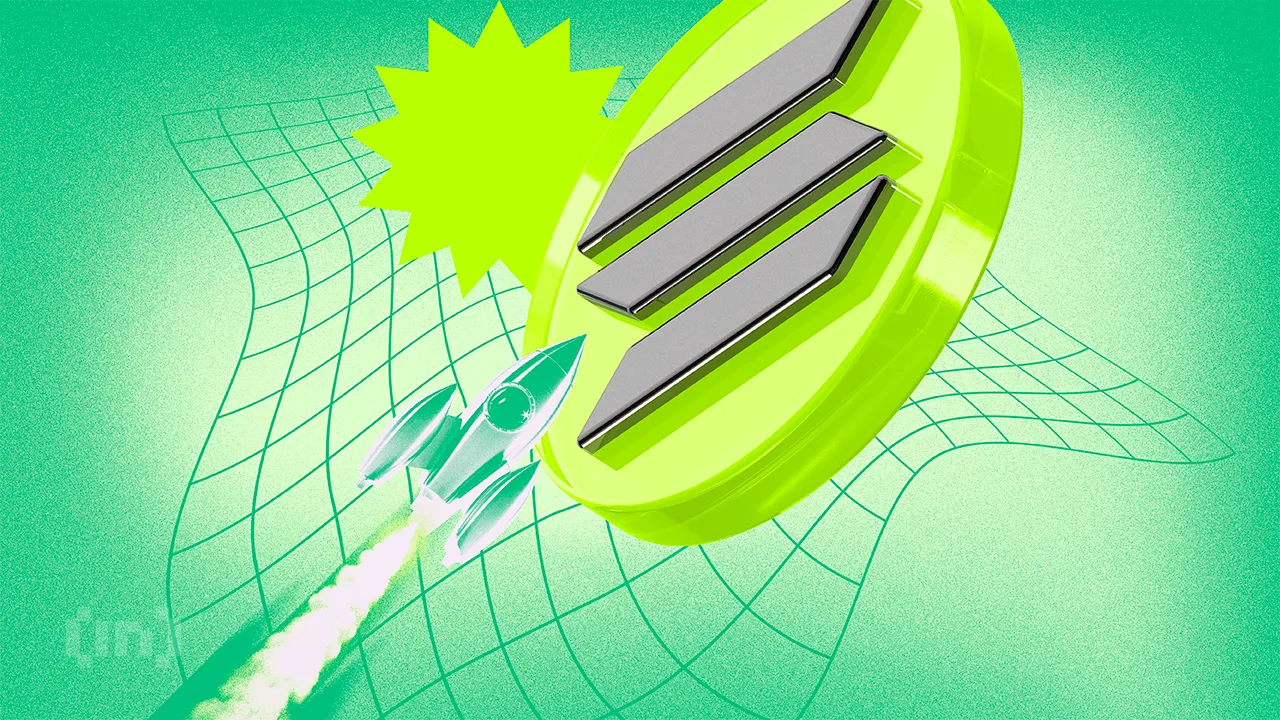
According to data from StakingRewards, Solana (SOL) has overtaken Ethereum (ETH) in staking market capitalization, reaching $53.15 billion compared to Ethereum’s $53.72 billion.
This milestone has sparked heated discussions across the social media platform X, raising the question: Is this a turning point for Solana, or merely a short-lived surge?
Solana Outpaces Ethereum As High Staking Yields Prove Appealing
Recent data reveals that 64.86% of Solana‘s total supply is currently staked, delivering an impressive annual percentage yield (APY) of 8.31%. In contrast, Ethereum has only 28.18% of its supply staked, with an APY of 2.98%.
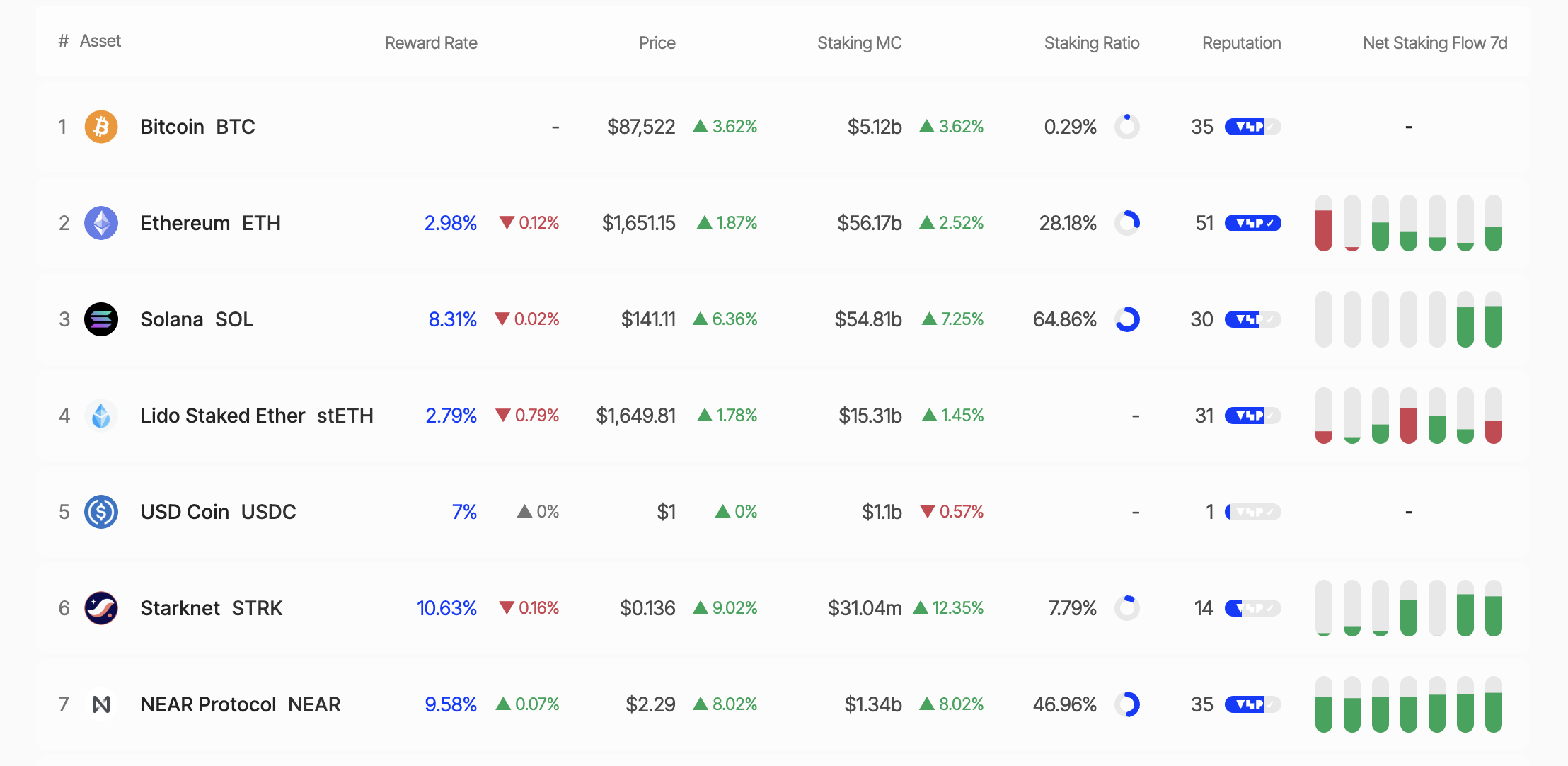
This disparity highlights Solana’s growing appeal for investors seeking passive income through staking. Staking market capitalization is calculated by multiplying the total number of staked tokens by their current price. With SOL priced at $138.91 as of this writing, Solana has officially surpassed Ethereum in this metric.
However, Solana’s high staking ratio has sparked some controversy. Critics, such as Dankrad Feist on X, argue that Solana’s lack of a slashing mechanism (or penalties for validator violations) undermines the economic security of its staking model. With its slashing mechanism, Ethereum offers greater security, despite its lower staking ratio.
“It’s very ironic to call it ‘staking’ when there is no slashing. What’s at stake? Solana has close to zero economic security at the moment,” Dankrad Feist shared.
Increased Whale Activity Signals Caution
Meanwhile, recent moves by “whales” (large investors) have further fueled interest in Solana. On April 20, 2025, a whale unstaked 37,803 SOL (worth $5.26 million). Similarly, Galaxy Digital withdrew 606,000 SOL from exchanges over four days (April 15–19, 2025), concluding with 462,000 SOL.
Additionally, on April 17, 2025, a newly created wallet withdrew approximately $5.15 million worth of SOL from the Binance exchange. In the same tone, Binance whales withdrew over 370,000 SOL tokens valued at $52.78 million.
While some whales withdrew their SOL holdings, other large holders accumulated. Janover, a US-listed company, increased its Solana holdings to 163,651.7 SOL (worth $21.2 million) and partnered with Kraken exchange for staking on April 16, 2025.
These actions signal diverging plays from institutional investors and whales, as the Solana price fluctuates around key levels.
SOL Price Analysis: Opportunities and Challenges
As of this writing, SOL was trading at $140.49, up 3.53% in the past 24 hours. Analysts highlight $129 as crucial support for the Solana price, with $144 presenting the key roadblock to overcome before Solana’s upside potential can be realized. Breaking above the aforementioned roadblock could propel SOL toward new highs.
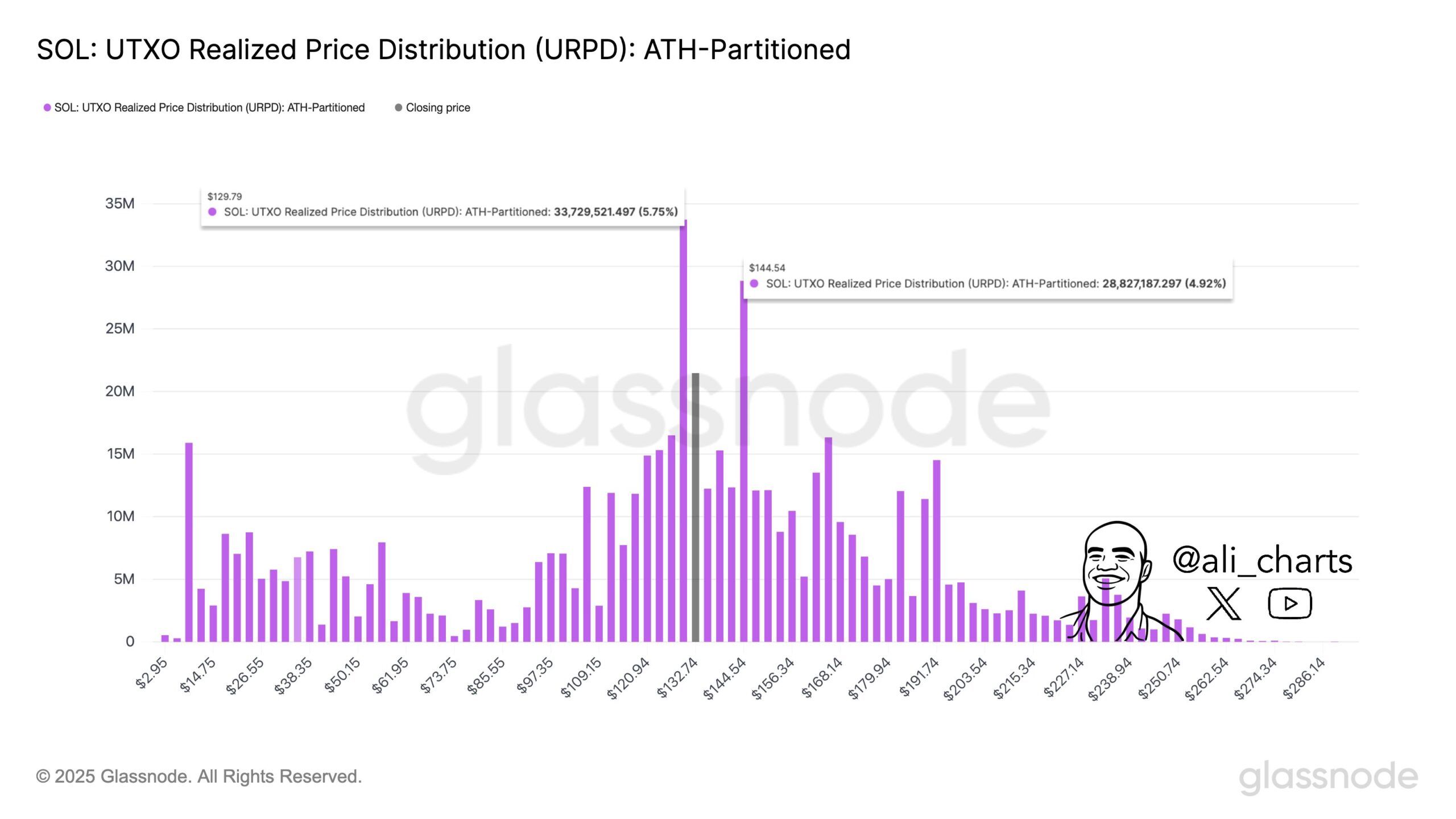
Conversely, dropping below the $129 support level could trigger increased selling pressure. Nevertheless, SOL has shown a remarkable recovery, with a 14.34% increase over the past week.
Another factor to consider is the ongoing development of the Solana ecosystem. Key innovations include the QUIC data transfer protocol, the combination of Proof-of-History (PoH) and Proof-of-Stake (PoS), and the diversification of validator clients.
With these, Solana continues to enhance its performance and decentralization. Additionally, the launch of the Solang compiler, compatible with Ethereum’s Solidity, has attracted developers from the Ethereum ecosystem.
BeInCrypto also reported on Solana’s upcoming community conference, otherwise termed Solana Breakpoint. Key announcements from this event could provide further tailwinds for the SOL price.
Nevertheless, despite surpassing Ethereum in staking market capitalization, Solana faces significant challenges. Ethereum benefits from a more mature DeFi ecosystem, greater institutional trust, and enhanced security through its slashing mechanism.
To some, Ethereum’s lower staking ratio (28%) may be a deliberate strategy to reduce network pressure and ensure liquidity for DeFi applications.
In contrast, Solana’s high staking ratio (65%) could limit liquidity within its DeFi ecosystem. This raises the question of whether Solana can strike a balance between staking and the growth of its decentralized applications.
As Solana continues challenging Ethereum’s dominance, the crypto community remains divided. Is Solana’s rise a sustainable breakthrough, or just another wave of hype?
Disclaimer
In adherence to the Trust Project guidelines, BeInCrypto is committed to unbiased, transparent reporting. This news article aims to provide accurate, timely information. However, readers are advised to verify facts independently and consult with a professional before making any decisions based on this content. Please note that our Terms and Conditions, Privacy Policy, and Disclaimers have been updated.
-

 Market21 hours ago
Market21 hours ago1 Year After Bitcoin Halving: What’s Different This Time?
-
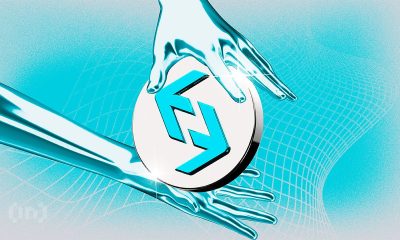
 Market22 hours ago
Market22 hours agoVOXEL Climbs 200% After Suspected Bitget Bot Glitch
-

 Market20 hours ago
Market20 hours agoTokens Big Players Are Buying
-
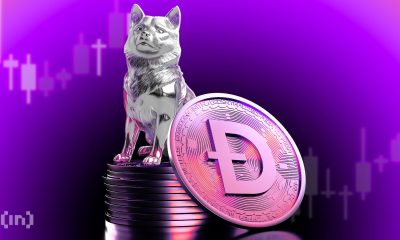
 Market19 hours ago
Market19 hours agoDogecoin Defies Bullish Bets During Dogeday Celebration
-

 Market17 hours ago
Market17 hours agoWill XRP Break Support and Drop Below $2?
-

 Market23 hours ago
Market23 hours agoHow Token Launch Frenzy Is Delaying 2025 Altcoin Season
-
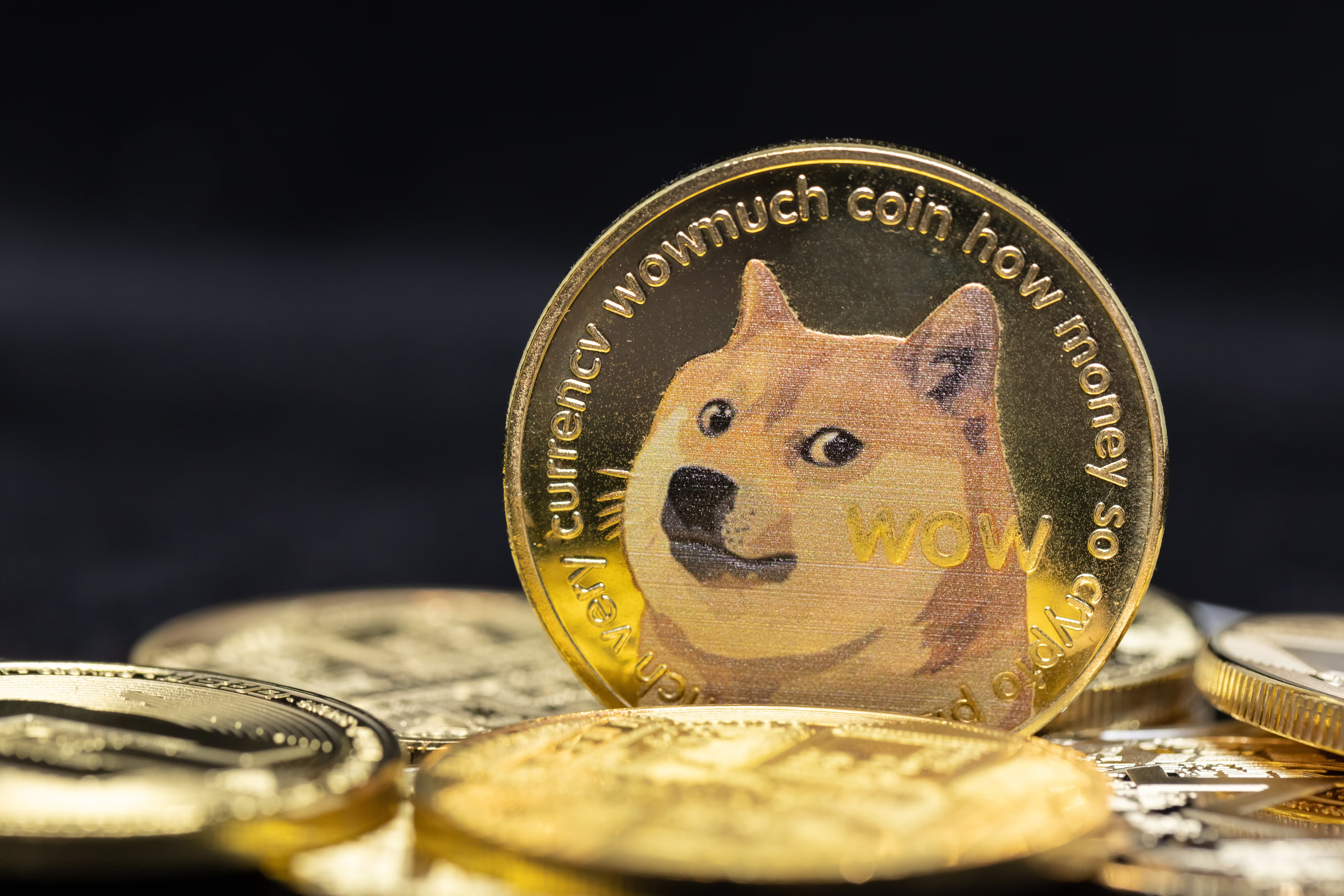
 Altcoin23 hours ago
Altcoin23 hours agoBinance Traders Go Big On Dogecoin—Majority Holding Long Positions
-

 Bitcoin17 hours ago
Bitcoin17 hours agoBitcoin LTH Selling Pressure Hits Yearly Low — Bull Market Ready For Take Off?
























